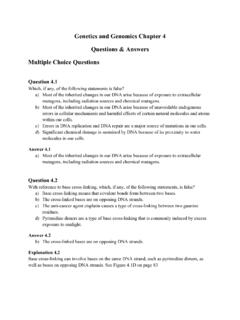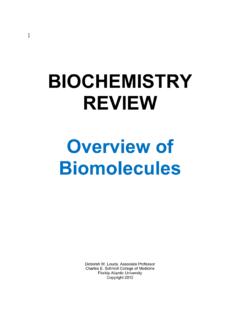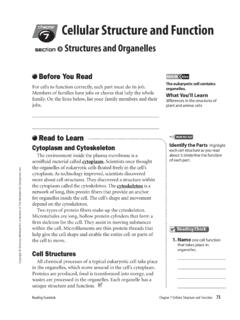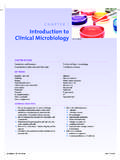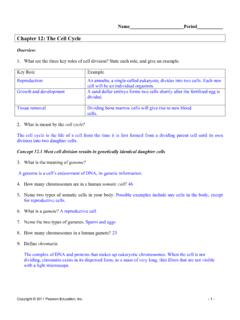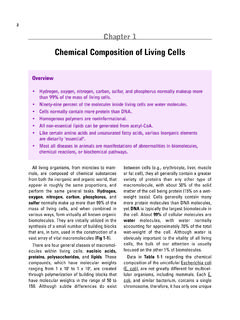Chapter 8 From Dna To Proteins
Found 9 free book(s)Genetics and Genomics Chapter 4 Questions & Answers ...
online.universita.zanichelli.itGenetics and Genomics Chapter 4 Questions & Answers Multiple Choice Questions Question 4.1 Which, if any, of the following statements is false? ... crucial DNA-protein interactions. Answer 4.8 b) ... HLA proteins are the most polymorphic human proteins. Answer 4.13 a) Each person makes many millions of different HLA proteins so as to be able to ...
CHAPTER 12 INERAL NUTRITION
ncert.nic.inthe major constituents of proteins, nucleic acids, vitamins and hormones. Phosphorus: Phosphorus is absorbed by the plants from soil in the form of phosphate ions (either as H PO 2 4 − or HPO 4 2−). Phosphorus is a constituent of cell membranes, certain proteins, all nucleic acids and nucleotides, and is required for all phosphorylation ...
Chapter 14
capricorn.bc.eduthe size of a linear DNA molecule can be estimated from the rate at which it moves through an agarose gel, because DNA molecules have a uniform charge to mass ratio. Protein electrophoresis is somewhat more complicated than DNA electrophoresis. Proteins are much smaller than DNA molecules, so polyacrylamide gels are used for their separation.
Overview of Biomolecules Book - College of Medicine
med.fau.eduChapter 2: Amino Acids I. Introduction The major function of amino acids is to act as the building blocks of proteins. Amino acids themselves can be used by …
7 Cellular Structure and Function
www.clevelandmetroschools.orgProteins are produced, food is transformed into energy, and wastes are processed in the organelles. Each organelle has a unique structure and function. chapter 7 section 3 Structures and Organelles Before You Read For cells to function correctly, each part must do its job. Members of families have jobs or chores that help the whole family.
Chapter 1 Introduction to Clinical Microbiology
samples.jbpub.comribosomes, the DNA chromosome, mRNA, proteins and metabolites, nucleoid, and plasmids. The cytosol contains many enzymes and is the site of most metabolic processes for the bacterial cell. The bacterial chromosome is one double-stranded circle contained in a discrete area of the cytoplasm, known as the nucleoid. The DNA is not con-
Chapter 12: The Cell Cycle
www.mrschmittbiology12ap.weebly.comchromatin: The complex of DNA and proteins that makes up eukaryotic chromosomes. When the cell is not dividing, chromatin exists in its dispersed form, as a mass of very long, thin fibers that are not visible with a light microscope. 12. Study Figure 12.5 in your text. Label the figure below, and summarize what occurs at the DNA level in each ...
Chemical Composition of Living Cells
www.tetonnm.comDNA 1 1 RNA 6 Ribosomal 3 Transfer 40 Messenger 1000 Nucleotides and metabolites 0.8 200 Proteins 15 2000-3000 Amino acids and metabolites 0.8 100 Polysaccharides 3 200 (Carbohydrates and metabolites) Lipids and metabolites 2 50 Inorganic ions 1 20 (Major minerals and trace elements) Others 0.4 200 100 assembly of virtually every protein ...
nucleoside nucleotides
www.vanderbilt.edua core of proteins known as histones. The DNA-histone assembly is called a nucleosome. Histones are rich is lysine and arginine residues. Pdb code 1kx5 351 28.10: Replication of DNA. The Central Dogma (F. Crick): DNA repl icaton t DNA ra nsc ipto tmRNA r a nsltio Protein (genome) (transcriptome) (proteome)
